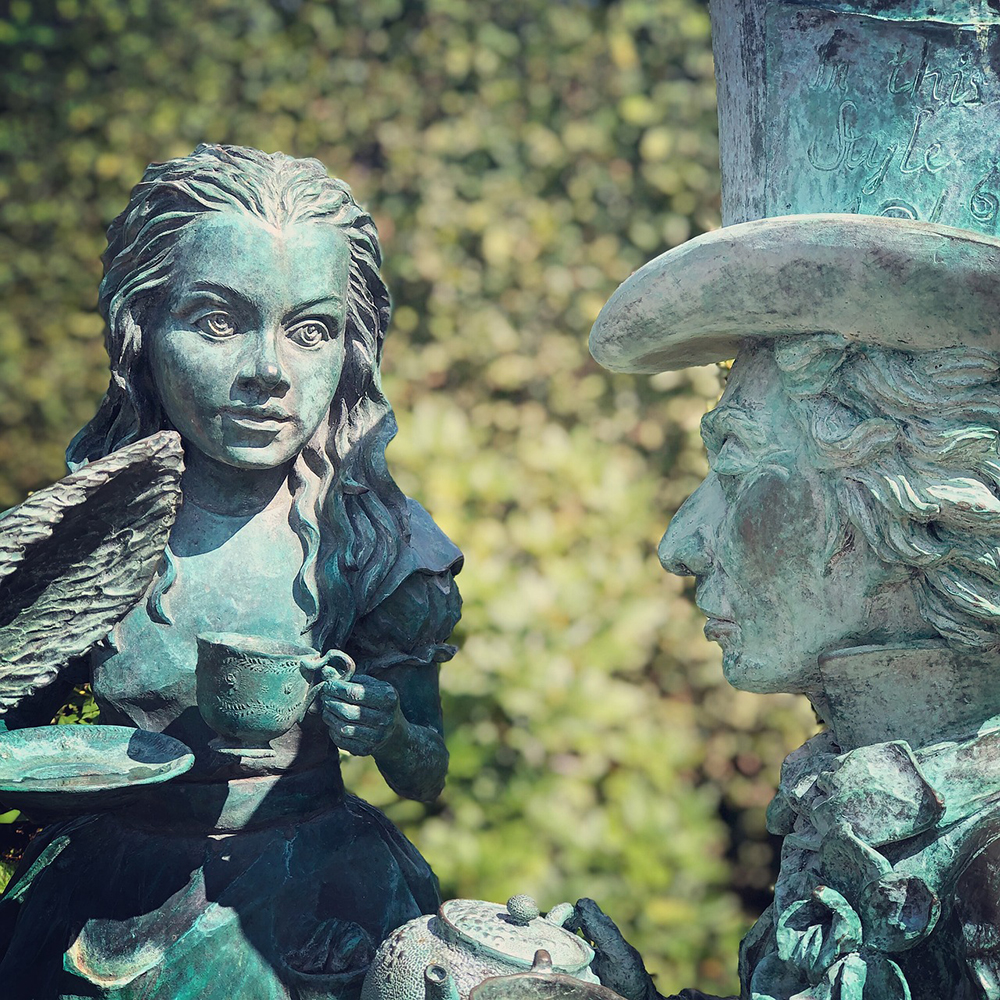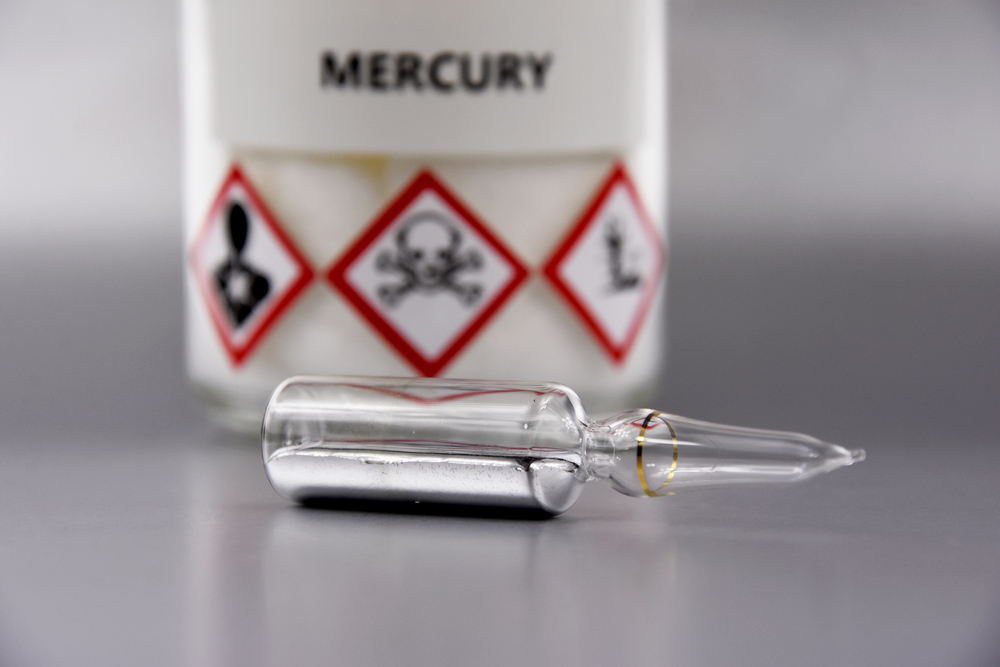Table of Contents (click to expand)
“Mad as a hatter” is a linguistic relic rooted in the history of the hat-making industry, mercury poisoning, and literary influences.
The man’s attire was an eclectic mishmash of colors, fabrics, and styles. His top hat, which seemed too large for any reasonable head, perched at a jaunty angle. A shock of unruly orange hair protruded from beneath the hat, and it appeared as though the hat itself had taken on a life of its own, refusing to sit still. His eyes, one larger than the other, swirled with a wild mixture of madness and mirth. Wonderland’s Mad Hatter was a sight to behold.

The phrase “mad as a hatter” is a curious and intriguing expression that has wiggled its way into the English language, conjuring images of eccentricity and irrationality. This idiom, often used to describe someone who appears to be going mad or behaving irrationally, originated in the 19th century and is closely tied to the hat-making industry.
Hat makers, known as hatters, utilized mercury compounds in the production of felt hats, particularly for top hats, during this era. This practice exposed them to toxic fumes and dust, leading to a condition known as mercury poisoning, or “mad hatter’s disease.”
Over time, the symptoms of mercury poisoning, including tremors, irritability, mood swings, and even hallucinations, contributed to the association between hatters and madness, solidified further by its appearance in the annals of popular culture.
The Historical Context
In the 18th and 19th centuries, the hat-making industry thrived, producing a wide variety of stylish headwear, with top hats being particularly sought after. Hatters, skilled artisans in the craft of hat-making, played a central role in this booming industry.

The process of creating felt hats specifically involved the use of mercury nitrate. This chemical treatment, known as “carroting,” was used to soften and mat animal fur, primarily rabbit fur, to create the desired felt texture for hats. Unbeknownst to the hatters of that era, this practice exposed them to the toxic effects of mercury.
Also Read: Lead: The Ancient (And Deadly) Artificial Sweetener
Mercury Poisoning
Mercury poisoning, also known as mercurialism or “mad hatter’s disease,” resulted from prolonged exposure to the toxic fumes and dust generated during the carroting process. This insidious ailment gradually manifested in various physical and psychological symptoms that came across as madness or insanity. Some of the hallmark symptoms of mercury poisoning include tremors, headaches, mood swings, irritability, nervousness, mental health issues, speech problems, hallucinations, and, in severe cases, memory problems.

The poisoning typically occurs because mercury rapidly travels through the bloodstream to the brain, where it exerts its neurotoxic effects. Hatters, laboring in poorly ventilated workshops and working with mercury compounds every day, unknowingly subjected themselves to this silent menace. As a result, they exhibited a range of peculiar behaviors, including trembling hands, slurred speech, and a lurching gait, leading outsiders to understandably mistake them for intoxicated individuals.
Also Read: Is The Fulminated Mercury Scene From Breaking Bad Scientifically Accurate?
The Evolution Of The Phrase
The phrase “mad as a hatter” began to take root in the collective consciousness as a way to describe these peculiar and seemingly irrational behaviors observed in hatters. Its earliest recorded appearance in print dates back to 1829 in Blackwood’s Edinburgh Magazine, but it gained widespread use during the 19th century.
Renowned author William Makepeace Thackeray employed the phrase in his 1850 novel “The History of Pendennis,” where he used it to convey anger, rather than madness. He wrote, “We were talking about it at mess, yesterday, and chaffing Derby Oaks – until he was as mad as a hatter.” Thackeray’s usage reflects the phrase’s evolving nature, as it shifted from indicating anger to madness or eccentricity.
The Impact Of Alice’s Adventures In Wonderland
While the phrase “mad as a hatter” had already found its way into literature, it was Lewis Carroll’s iconic work, Alice’s Adventures in Wonderland, published in 1865, that solidified its association with madness in popular culture. Carroll introduced a character known as the Hatter in his whimsical tale. The Hatter, although not explicitly labeled “mad” in the book, exhibited eccentric and nonsensical behavior throughout the story.
Alice first encounters the Hatter at a tea party with the March Hare, a scene in which the Hatter poses the famous riddle, “Why is a raven like a writing desk?” Alice’s famous encounter with the peculiar and unpredictable Hatter contributed to the popular perception that hatters were indeed mad.

Conclusion
The phrase “mad as a hatter” is a linguistic relic that was borne from the intriguing intersection of the hat-making industry, mercury poisoning, and literature. Hatters of the 19th century unknowingly exposed themselves to toxic mercury compounds, leading to symptoms that mimicked madness. These afflicted hatters became the living embodiment of the phrase, “mad as a hatter,” and their peculiar behaviors were immortalized in literature, notably in Lewis Carroll’s Alice’s Adventures in Wonderland.
The phrase’s evolution, from its origins in anger to madness or eccentricity, reflects the changing understanding of the effects of mercury poisoning. Today, “mad as a hatter” remains a testament to the curious and sometimes dark origins of idiomatic expressions, reminding us that language is often woven from the threads of history, industry, and human experience.
How well do you understand the article above!

